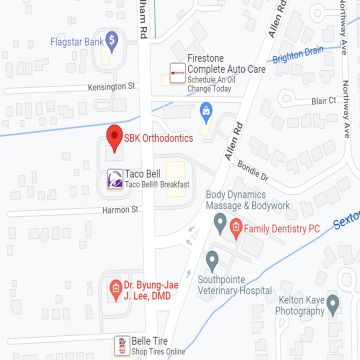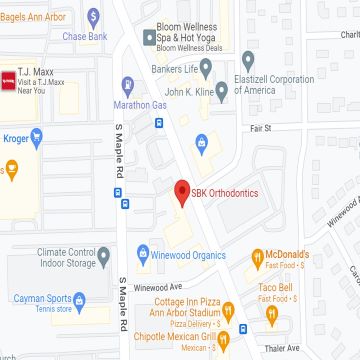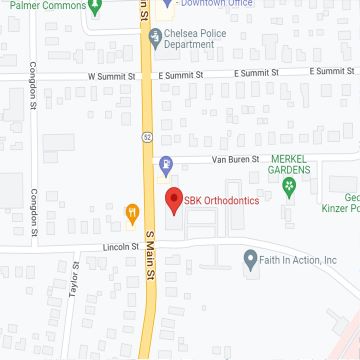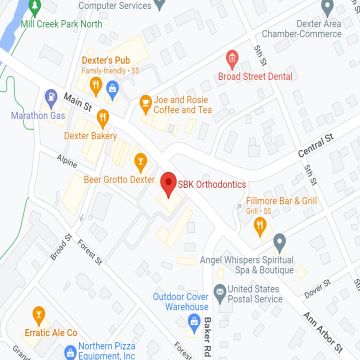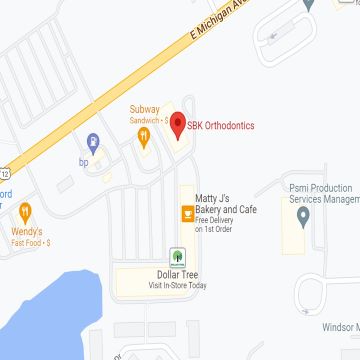How an Interdental Brush and Other Tools Help Maintain Good Oral Hygiene During Orthodontics

Consider the importance of good oral hygiene with this example: brackets, wires, clear aligners, specialist know-how, and other tools and mechanisms. None of them work if not for the driving element in orthodontics, one that frames them all. Indeed, orthodontic treatment requires “compliance” from orthodontic patients meaning strictly following the specialist’s prescriptions and recommendations.
Strictness? Yes, orthodontic treatment requires a bit of a sacrifice for a result that surpasses most patients’ expectations. Surely, gains by far exceed the slight discomfort. No pain, no gain is what they say, right?
Moreover, we pinpoint one of the most controversial key points of compliance, “hygiene.” Poorly managed oral hygiene compliance exacerbates bacteria accumulation and the terrible dangers associated with it.
Treatment delays and reversions from tooth decay, dental cavities, and periodontal disease are at the forefront of the issues to avoid immediately during orthodontic treatment with braces, that is the reason why oral hygiene advice protocols are so important, and we explain why.
So, let’s keep an eye on what we prepared for you to get the best out of your treatment with braces with this oral hygiene instruction.
How to Brush Your Teeth With Braces?
There is no better form of caring for your braces investment and getting the best of it than making a little effort to get astonishing results. So, here we accompany you in explaining oral hygiene measures and the most efficient way to brush your teeth during your Taylor braces treatment.
Use Fluoride Toothpaste
Enamel is the outermost protectant teeth layer. Moreover, as time passes by, the enamel wears off. Also, regrettably, the enamel is one of the few composites in your body formed of a complex chemical bond that doesn’t regenerate.
Fluoride doesn’t prevent the enamel from wearing off, and you can’t reverse the process, but you can help yourself by using fluoride toothpaste to slow down the demineralization process.
Preventing demineralization is vital to prevent tooth decay, gum disease, dental caries, and in general adverse effects on teeth and mouth.
Use Little Toothpaste
Braces hinder the sight of food residues that get trapped in the nooks and crannies. Too much toothpaste makes it difficult to identify those little spaces needing special attention.
Spend a Little More Time Brushing
Normally, you would spend at least one minute brushing one of the four quadrants of your mouth. As for the time, there is no real consensus, but mechanical removal of particles is key to minimizing the harboring environment for bacteria to breed.
So, it is a fact having an irregular foreign body in your mouth requires more time to clear the debris that gets in those entrenched spaces. Therefore, for proper brushing, we recommend spending at least an extra minute per quadrant doing so.
Make Circular and Angled Movements With Your Toothbrush
In normal circumstances, a vertical up-and-down brushing trajectory would do the job. However, having braces means having all sorts of irregular shapes in your mouth.
However, to clear them out, you must place your toothbrush reaching the braces and wires edges, making a rotation movement that forms an angle towards the device edges. Repeat this movement several times.
What Is the Best Flossing Mechanism for Good Oral Hygiene?
Here we stop to make a short distinction. Flossing without braces is far different than doing so with your mouth full of metal or foreign ceramic bodies. First, a conventional flossing thread doesn’t get all the job done.
To really get all the debris away, you need the thread to go all the way to the gums, but how are you going to do that if you have your braces on? Here we draw some points about it:
Conventional Flosser
When you try to get it in between your teeth, a floss threader will only get to clean the space where it reaches the wire but reaching the gums is virtually impossible.
So, there is a dilemma. Getting to the gums and the entrenched areas requires using a utensil you can easily maneuver and introduce in those areas. So, to practice an appropriate oral health ritual with braces, we can skip conventional flossing for now and move on to an alternative approach.
Self-Threading FlossersSelf-Threading Flossers
A self-threading flosser has a hard end patients can insert between teeth and in the space between the gums and the wire, achieving that little part of the job you won’t have the chance to get with a regular flosser, the gingival margin.
A self-threading flosser is a great utensil to remove debris and food residues, but you still need more. Moreover, some food residues stick to your braces and between the wires and teeth.
Water Irrigator
A water irrigator accomplishes getting to the parts where food gets clogged. Patients direct the water flosser to the affected area and discharge a splash of pressurized water, clearing food residues away.
Notwithstanding, a water irrigator is not the only way to clear debris away, and it can only work out on the parts patients can see, but to clear all meaningful areas, you need a stick with bristles that can get almost everywhere.
Interdental Brushes
An interdental brush is a quite small utensil that looks like a toilet brush and is one of the most effective tools for dental hygiene. Patients can grab a brush tube with the thumb and index fingers for easy handling.
A patient can insert a brush between teeth with a back and forth and twist it to make the bristles clear more debris away than with other flossers.
Thanks to the little bristles and the simplicity of getting into difficult nooks and crannies, a patient can use the brush to apply the same mechanics between the wires and into the braces and avoid plaque buildup.
Interdental Brushing vs Conventional Flossing
The main purpose of this article is to educate our patients about the most efficient sanitation method to make the braces-wearing journey a complete success. In that sense, reinforcing the hierarchy of the previous annotations, we find it necessary to answer the question, Why should I use interdental brushes?
First and most importantly, when plaque accumulates in the borderline of a tooth and the gum, removing it is critical for the effectiveness of your treatment and to avoid progression from bleeding to periodontitis.
Secondly, there is no feasible way to reach the gums with a conventional flosser.
Thirdly, choosing a self-threading flosser is a wise alternative, but the interdental brush has bristles that reach the additional mechanic clearing of particles.
An interdental brush allows enhanced handling so you can insert the head of the utensil between the teeth and wires. Furthermore, you can clear debris on the brackets’ edges and clips with it.
How to Maintain Oral Hygiene With Braces?
Oral Health Professionals recommend all of the above and some other measures to get your mouth out of dental decay trouble when wearing braces. So, take notes on the recommendations we have given to you and add these additional and quite important steps:
Use Mouthwash
So far, we have discussed the correct brushing and flossing operation. In other words, we’ve detailed how to remove unwanted food particles from your teeth and orthodontic braces, but we also need to reduce the bacterial population to a minimum.
Mouthwash helps control the proliferation of bacteria, which is the other side of the same problem. Indeed, a complimentary action eliminating the breeding source and the biological agent substantially boosts dental hygiene.
Schedule Periodic Oral Hygiene Clean-Ups
Periodic clean-ups or follow-up visits are fundamental for an orthodontic treatment’s success. A dental hygienist uses blue light to identify problematic areas and works with a scaler, a device with a hook to remove tartar above and below the gum line.
In some cases, tartar sticks to the teeth forming a solid deposit requiring the use of a vibrational energy scaler that breaks the calculus making it easier to remove from the teeth’s walls.
We Accompany You to Get the Most Out of Your Orthodontic Treatment
Our patients make a great effort to get the best results. At SBK Orthodontics, we applaud their resolution for a life-changing experience despite the sacrifices it implies. So, we provide them with all the support they need, so they feel they are not alone in this journey.
Schedule an appointment with our team of specialists in Taylor, MI, who are always ready to assist you when you have questions and do their best to provide our patients with high-quality care. If you need Ann Arbor orthodontic treatment, at SBK Orthodontics, we commit to setting you up for a lifetime of a smile healthy and beautiful smile.




